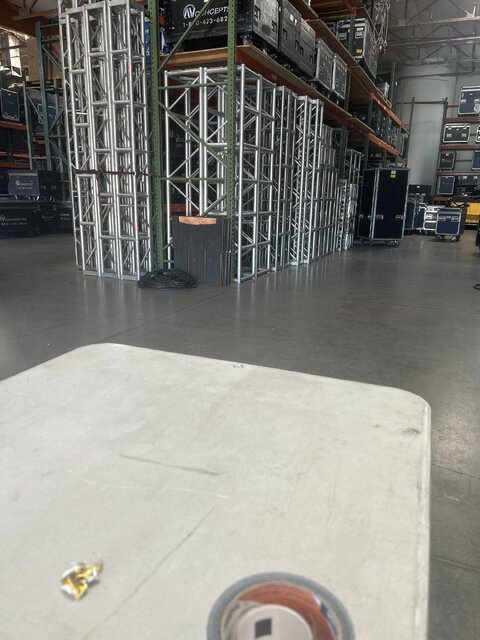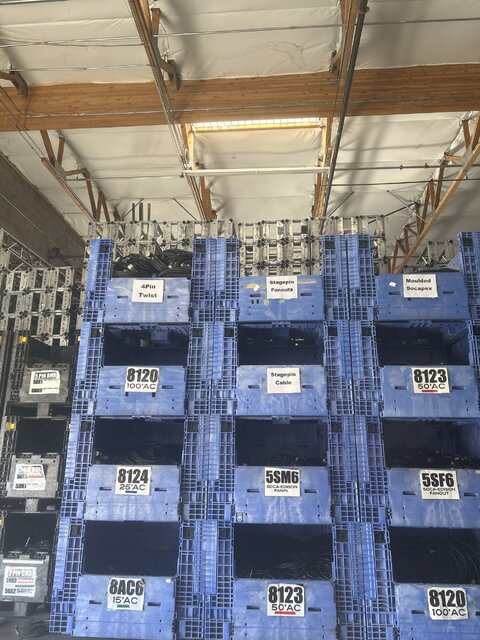Hi there, hopefully this is a good place to post. Wasn't really sure where to get professional advice.
I started at a convention center not to long ago. In the beginning we'd build some baby truss box arches 12x12 occasionally. None of us have any rigging experience, but it only seemed a little sketch having 6 of us tip this thing over and walk it back to drop it.
With a new purchase we tend to be frequently building a box arch 35w x 25h. To do this we build 2 25ft side sticks and then push those up. Then we build the 34ft wide peice, balance it on a scissor lift, raise it up then move the sides in place. Then use another lift to bolt it in. To lower we do it all in reverse.
Then we just push this thing around the room where ever we need it to be. (the truss base is 2x2 plate so it slides on carpet)
I frequently find loose bolts and have suggested we get a torque wrench to verify the bolts are tight, especially with us pushing this thing around the room.
Is this an OK way of doing it? It always feels sketchy having someone crouched down in the lift hoping we balanced the bar correctly so it won't fall off.
I started at a convention center not to long ago. In the beginning we'd build some baby truss box arches 12x12 occasionally. None of us have any rigging experience, but it only seemed a little sketch having 6 of us tip this thing over and walk it back to drop it.
With a new purchase we tend to be frequently building a box arch 35w x 25h. To do this we build 2 25ft side sticks and then push those up. Then we build the 34ft wide peice, balance it on a scissor lift, raise it up then move the sides in place. Then use another lift to bolt it in. To lower we do it all in reverse.
Then we just push this thing around the room where ever we need it to be. (the truss base is 2x2 plate so it slides on carpet)
I frequently find loose bolts and have suggested we get a torque wrench to verify the bolts are tight, especially with us pushing this thing around the room.
Is this an OK way of doing it? It always feels sketchy having someone crouched down in the lift hoping we balanced the bar correctly so it won't fall off.





